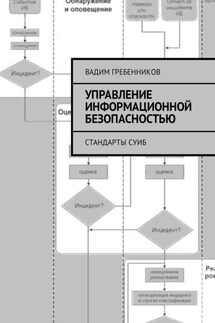IT Cloud - страница 37
esschtolts @ cloudshell: ~ (essch) $ gcloud container clusters delete mycluster –zone europe-north1-a;
The following clusters will be deleted.
– [mycluster] in [europe-north1-a]
Do you want to continue (Y / n)? Y
Deleting cluster mycluster … done.
Deleted [https://container.googleapis.com/v1/projects/essch/zones/europe-north1-a/clusters/mycluster].
esschtolts @ cloudshell: ~ (essch) $ gcloud container clusters list –filter = name = mycluster
Total. We created a cluster and created a load balancer with just two run and expose commands, now we can go to the balancer's IP address and watch the NGINX welcome page in the browser. In this case, the cluster recovers itself, for this we emulated a failure of the pod by deleting it – it was created again.
Cluster Reproducibility
Let's take a look at the situation from the previous chapter, in which we created a cluster, deleted a replica, and it recovered. The fact is that we do not manage commands directly, but with the help of commands we create descriptions of the required configuration of the cluster and place it in the distributed storage, after which the state of the nodes is maintained in accordance with this description in the distributed storage. We can also get and edit these descriptions, or write ourselves and then upload them to a distributed storage. This will allow us to save the state on disk in the form of YAML files and restore it back, as is often done when moving from a production server to a test one. In addition, we get the opportunity to more flexibly customize the state, but since we are not limited to commands.
esschtolts @ cloudshell: ~ (essch) $ kubectl get deployment / Nginx –output = yaml
apiVersion: extensions / v1beta1
kind: Deployment
metadata:
annotations:
deployment.kubernetes.io/revision: "1"
creationTimestamp: 2018-12-16T10: 23: 26Z
generation: 1
labels:
run: Nginx
name: Nginx
namespace: default
resourceVersion: "1612985"
selfLink: / apis / extensions / v1beta1 / namespaces / default / deployments / Nginx
uid: 9fb3ad6a-011c-11e9-bfaa-42010aa60088
spec:
progressDeadlineSeconds: 600
replicas: 1
revisionHistoryLimit: 10
selector:
matchLabels:
run: Nginx
strategy:
rollingUpdate:
maxSurge: 1
maxUnavailable: 1
type: RollingUpdate
template:
metadata:
creationTimestamp: null
labels:
run: Nginx
spec:
containers:
– image: Nginx
imagePullPolicy: Always
name: Nginx
resources: {}
terminationMessagePath: / dev / termination-log
terminationMessagePolicy: File
dnsPolicy: ClusterFirst
restartPolicy: Always
schedulerName: default-scheduler
securityContext: {}
terminationGracePeriodSeconds: 30
status:
availableReplicas: 1
conditions:
– lastTransitionTime: 2018-12-16T10: 23: 26Z
lastUpdateTime: 2018-12-16T10: 23: 26Z
message: Deployment has minimum availability.
reason: MinimumReplicasAvailable
status: "True"
type: Available
– lastTransitionTime: 2018-12-16T10: 23: 26Z
lastUpdateTime: 2018-12-16T10: 23: 28Z
message: ReplicaSet "Nginx-64f497f8fd" has successfully progressed.
reason: NewReplicaSetAvailable
status: "True"
type: Progressing
observedGeneration: 1
readyReplicas: 1
replicas: 1
updatedReplicas: 1
This will be superfluous for us, so I will delete the unnecessary, because when creating, we specified only the name and image, the rest was filled with default values:
apiVersion: extensions / v1beta1
kind: Deployment
metadata:
labels:
run: Nginx
name: Nginx
spec:








